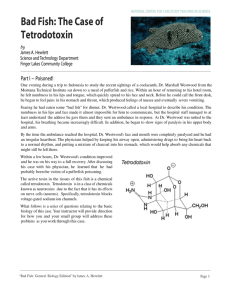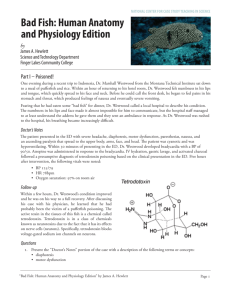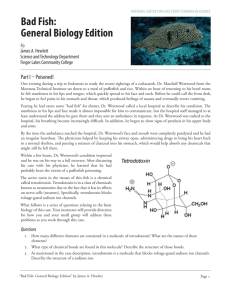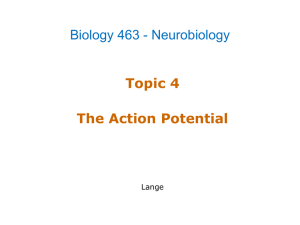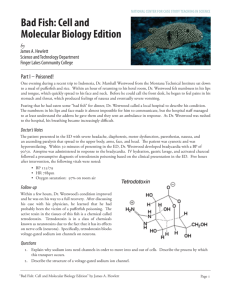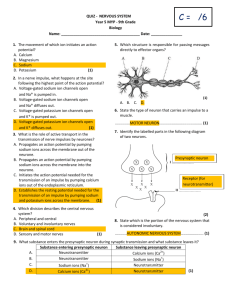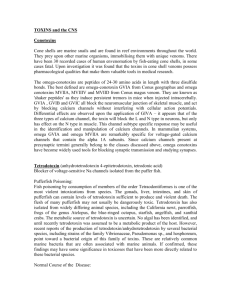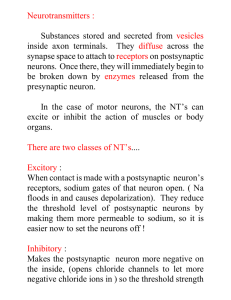Bad Fish Part 1
advertisement
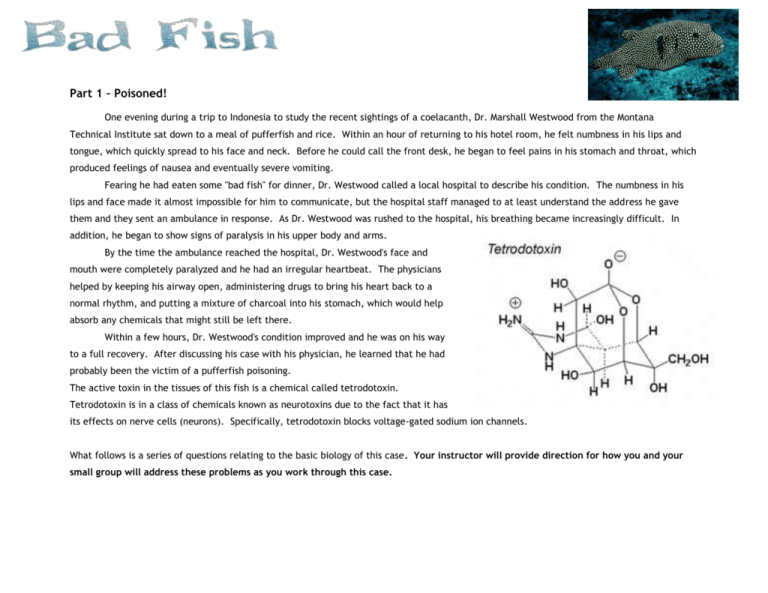
Part 1 – Poisoned! One evening during a trip to Indonesia to study the recent sightings of a coelacanth, Dr. Marshall Westwood from the Montana Technical Institute sat down to a meal of pufferfish and rice. Within an hour of returning to his hotel room, he felt numbness in his lips and tongue, which quickly spread to his face and neck. Before he could call the front desk, he began to feel pains in his stomach and throat, which produced feelings of nausea and eventually severe vomiting. Fearing he had eaten some "bad fish" for dinner, Dr. Westwood called a local hospital to describe his condition. The numbness in his lips and face made it almost impossible for him to communicate, but the hospital staff managed to at least understand the address he gave them and they sent an ambulance in response. As Dr. Westwood was rushed to the hospital, his breathing became increasingly difficult. In addition, he began to show signs of paralysis in his upper body and arms. By the time the ambulance reached the hospital, Dr. Westwood's face and mouth were completely paralyzed and he had an irregular heartbeat. The physicians helped by keeping his airway open, administering drugs to bring his heart back to a normal rhythm, and putting a mixture of charcoal into his stomach, which would help absorb any chemicals that might still be left there. Within a few hours, Dr. Westwood's condition improved and he was on his way to a full recovery. After discussing his case with his physician, he learned that he had probably been the victim of a pufferfish poisoning. The active toxin in the tissues of this fish is a chemical called tetrodotoxin. Tetrodotoxin is in a class of chemicals known as neurotoxins due to the fact that it has its effects on nerve cells (neurons). Specifically, tetrodotoxin blocks voltage-gated sodium ion channels. What follows is a series of questions relating to the basic biology of this case. Your instructor will provide direction for how you and your small group will address these problems as you work through this case. Questions 1. How many different elements are contained in a molecule of tetrodotoxin? What are the names of these elements? 2. What type of chemical bonds are found in this molecule? Describe the structure of those bonds. 3. As mentioned in the case description, tetrodotoxin is a molecule that blocks voltage-gated sodium ion channels. Describe the structure of a sodium ion. 4. What is a voltage-gated sodium ion channel? What is it made of? What is its function? 5. Why do sodium ions need channels in order to move into and out of cells? 6. Describe the process involved in the movement of ions through these channels. 7. When nerve cells are at rest, there is an unequal amount of positive and negative charges on either side of a nerve cell membrane. This charge difference is called an electrical potential. Describe this "potential" when the neuron is at rest (resting potential). 8. What is happening to the electrical potential of a neuron when it generates an action potential? What is the function of the action potential in neurons? 9. Describe the role of sodium ions and sodium channels in the action potential. 10. What would happen to a neuron if it were exposed to tetrodotoxin? Be specific regarding its effect on the ability of a neuron to communicate. 11. Now that you have addressed some of the basic biology of this case, explain why Dr. Westwood experienced numbness after eating the pufferfish meal. 12. Paralysis is a term used to describe the loss of function of muscle. If tetrodotoxin's effect is on neurons, why did Dr. Westwood experience paralysis?
